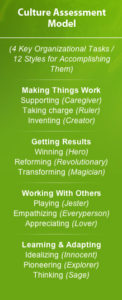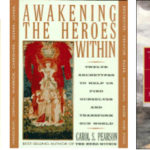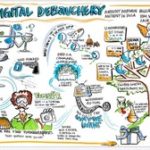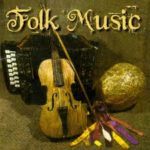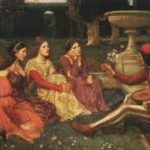See a photo of Cindy, her bio, Part 1 of this Q&A, Part 2, and Part 3.
Q&A with Cindy Atlee, Question 4:
Q: Watch this TED Talk and react to what the speaker, Tyler Cowen [pictured], says are the problems with stories.
A: Well, like it or not, we’re all ironically paying attention to Mr. Cowen
because he’s cast himself in the role of provocateur (uh oh, another pesky story for him to deal with!). Despite his best intentions, he’s using story to discount story — narrative itself being so deeply ingrained in the human psyche that it’s really just about impossible to escape.
I think most of us who work with story or character in some way all agree that at its most fundamental, story is the frame through which humans make meaning of their lives. So, where I do agree with Mr. Cowen is that we always have to pay attention to other’s attempts to do that for us (whether it’s benign or manipulative, via advertising or our teenage daughter’s version of last night’s events).
Cowen also suggests that stories have an inherent bias, a way of framing circumstance and experience that contains only a portion of what is or might be real. The truth, of course, is that however we get our information, it always comes with a bias — our own, the one others have imposed on it, the spoken and unspoken cultural agreements about what we’ll see and acknowledge and what we won’t.
That means we always need to practice story vigilance; we always need to check in with ourselves for our intuitive reaction to the truth and relevance and authenticity of any story we’re being told. What it doesn’t mean, for me, is that we give up on story (or that we could, even if we decided to try).
Cowen says that life is messier than any story we can tell, more ordinary, smaller in scale and promise than the stories we love to hear and share. I see life as larger and grander than that, our imaginations as wilder and less willing to be so contained. Our daily lives may lack the scale of a heroic myth but not the motivation. For those of us who need purpose to be fulfilled, story contains the metaphor, the symbolism, the poetry we need to feel engaged with the world around us and to understand our part in it.
And while I agree that no one story can hold all of who we are — or all of what’s present in our lives at any given moment — it’s story that best reveals what’s most essential about us, who we could become and what lies within us. The stories we relate to most matter a great deal. They frame our journeys each and every day. So to the 51 percent of Mr. Cowen’s research respondents who say life is a journey, I’m with you. And I’ll bet you have some great stories to tell!


